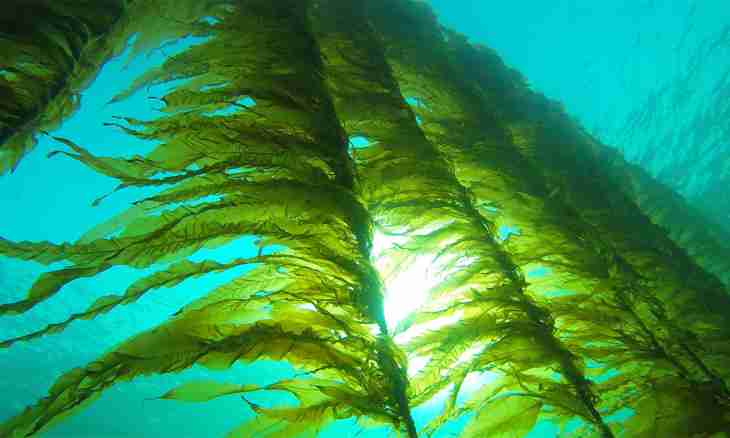Green seaweed most often can be met in fresh reservoirs and on marshy land areas. Occasionally some representatives of these simplest plants lodge in the seas, and sometimes they can be found also on trunks of trees. Also green seaweed are the most widespread plants in aquariums.
What characterizes green seaweed
Green seaweed are a department of the lowest plants which are characterized by bright green coloring because of a large number of a chlorophyll in their cages. These seaweed contain the same pigments, as well as at the higher plants (carotene, xanthophyll and a chlorophyll). Plants are divided into several types: colonial, monocelled and multicellular. At the same time the last meet threadlike and occasionally lamellar form more often. Some of green seaweed have the noncellular building, it is difficult to believe in it, looking at the big sizes and the external partition seeming difficult.
Mobile colonial and monocelled species of seaweed are gametes and zoodisputes have 2-4, and sometimes more zhgutik and a photosensitive peephole. One has cages of these plants, several kernels are more rare, usually they are dressed in a cover from cellulose. Green seaweed can breed in the vegetative way (division of a body in two at monocelled, at threadlike multicellular – sites of a tallom), sexless (motionless disputes and zoodisputes) and sexual (a heterogamy, an isogamy, conjugation and an oogamiya) ways.
What are types of green seaweed
Green seaweed are divided into two sections: conjugates and directly green. Green in turn are divided into six classes: volvoksovy, protokokkovy (chlorokokkovy), sifonovy, sifonokladovy and ulotriksovy. These plants are most densely widespread in fresh waters, but sometimes meet also in the seas. Some green seaweed - plevrokokk and a trentepoliya, can live in the soil and on trunks of trees. Colonial and monocelled plants are a part of plankton if they manage to develop in a large number, then cause water blossoming. Monostroma and sea salad in the countries of East Asia is eaten. In many countries stsenedesmus, the chlorella and other monocelled are used as a forage basis for farm animals and also for restoration of air in the closed ecosystems (for example, on submarines) and for biological sewage treatment. The most typical representative of green seaweed is the hlamidomonada, the building it is similar to flagellates. This monocelled plant of an oval form and with two zhgutika. The cage of this alga consists of a red peephole, a cover, the pulsing vacuole, cytoplasm, a bowl-shaped chromatophore with a pyrenoid and kernels. Hlamidomonada live on the crude earth and in pools, breed zoodisputes, sexless and all three forms of a sexual way.

